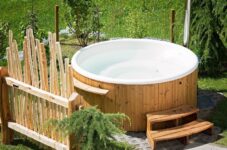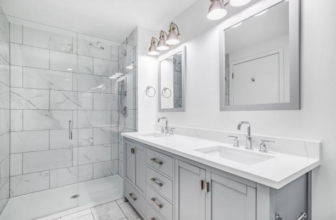
Hot Tub Troubleshooting and Repair: Common Issues and DIY Solutions

Key points include effective strategies for clearing cloudy, green, or foamy water, ensuring your soak is both safe and satisfying. It also offers practical advice on diagnosing and fixing heating problems, so your hot tub remains a warm haven, alongside troubleshooting tips for noisy or leaky pumps that can disrupt the peace or lead to more significant issues.
This guide is a vital tool for hot tub owners, providing straightforward DIY solutions to common issues. From adjusting water chemistry to fixing mechanical faults, it empowers you to keep your hot tub in top condition, ensuring it continues to be a source of relaxation and enjoyment.
Water Quality Issues: Clear Solutions for Your Hot Tub
Maintaining crystal-clear water in your hot tub is not just about aesthetics; it’s crucial for the health and safety of its users as well as for the longevity of the tub itself. However, it’s not uncommon for hot tub owners to encounter water quality issues that can turn their relaxing oasis into a source of stress. Let’s dive into the common water woes you might face and arm you with DIY solutions to keep your waters inviting.
Cloudy water in your hot tub can be a real dampener on your hot tub experience. This murky problem usually stems from insufficient filtration or a high level of contaminants. The solution begins with the basics: test and adjust your hot tub’s chemical balance. It’s essential to ensure that the pH, alkalinity, and sanitizer levels are within the recommended ranges. Next, take a look at your filter. A dirty or worn-out filter won’t do its job properly. Cleaning your filter according to the manufacturer’s instructions or replacing it if necessary can make a world of difference. Finally, consider increasing the duration of your filtration cycle. More filtration time means cleaner water.
Green water is a tell-tale sign of algae growth, a common issue when the sanitizer levels are too low or if the water hasn’t been circulated properly. Battling this green menace requires a bit of elbow grease and a shock treatment with a high chlorine dose. This will kill the algae and other bacteria lurking in your waters. After shocking, give your filter a thorough clean to remove any algae remnants and ensure it’s running efficiently. Proper water circulation is also key to preventing future algae invasions, so make sure your hot tub’s pump and jets are in good working order.
Foamy water can transform your hot tub from a relaxing retreat into a bubble bath gone wrong. This foam fest is often caused by high levels of contaminants like soaps, lotions, and organic matter introduced by bathers. While it might be tempting to just scoop out the foam, addressing the root cause is necessary for a long-term fix. Start by using antifoam chemicals designed specifically for hot tubs to reduce the existing foam. Then, balance your water’s chemistry to ensure it’s not contributing to the problem. Regularly cleaning or replacing your filter will also help catch contaminants before they can stir up trouble. Encouraging bathers to shower before entering can significantly reduce the amount of soap and lotion residues entering the water.
Heater Problems: Keeping the Heat in Your Hot Tub
There’s nothing more disappointing than stepping into your hot tub, expecting a warm embrace, only to be greeted by lukewarm or cold water. Heater problems can be a major buzzkill, but before you let the chill dampen your spirits, let’s troubleshoot some common causes of heating issues and explore DIY solutions that can help restore your hot tub’s cozy warmth.

The heart of the matter often lies with a faulty heating element, a malfunctioning thermostat, or inadequate water flow. Each of these issues can prevent your hot tub from reaching its optimal temperature, but with a bit of detective work, you can identify and fix the culprit.
First, check the water flow. Poor water flow can be a silent saboteur of your hot tub’s heating efficiency. A clogged or dirty filter can restrict water flow, making it difficult for your hot tub to heat properly. Give your filters a thorough inspection and cleaning. If they’re beyond redemption, replacing them might be necessary. Ensuring that water can move freely through your system is a critical step in troubleshooting heating problems.
Next, turn your attention to the heater’s high-limit switch. This safety feature prevents the heater from operating at dangerously high temperatures. However, if it trips too easily or malfunctions, it can stop your heater from working altogether. Resetting the high-limit switch can sometimes solve the issue, but if it continues to trip, further investigation is needed to ensure there aren’t underlying problems causing excessive heat.
Finally, the heating element and thermostat warrant a closer look. These components are crucial for heating your hot tub water to just the right temperature. Testing their functionality can be a bit more technical and might require a multimeter to check for continuity or electrical issues. If you’re not comfortable performing these tests, seeking professional help is advisable. However, if you are experienced with electrical components, checking these parts can pinpoint whether they’re working correctly or if replacements are needed.
Addressing heater problems in your hot tub can feel like a daunting task, but many issues can be resolved with a bit of DIY spirit and attention to detail. By keeping your filters clean, ensuring proper water flow, and checking the key components like the high-limit switch, heating element, and thermostat, you can often restore the warmth and comfort your hot tub is meant to provide.
Pump and Motor Issues: Silence and Seal for Optimal Performance
The pump is the heartbeat of your hot tub, circulating water through the system to keep it clean and heated. But when that heartbeat starts to sound more like a drum solo or you find leaks undermining your hot tub’s efficiency, it’s time to take action. Understanding the causes behind noisy pumps and leaks can guide you to DIY solutions that restore tranquility and seal the deal on leaks.
A noisy pump can disrupt the serene ambiance of your hot tub soak. Two common culprits behind this racket are air in the system and worn bearings. Air can get trapped in the pump and cause a gurgling or humming noise, while worn bearings often produce a grinding or screeching sound that’s hard to ignore.
To tackle air-related noise, start by bleeding the air from the system. This can usually be done by loosening the bleed valve on the pump until water starts to flow out, indicating that most of the air has been expelled. Ensuring all jets are open can also help prevent air from being sucked into the system.

If the noise persists and you suspect worn bearings are to blame, the pump may need more attention. Bearings are a critical component that allows the pump motor to run smoothly. Over time, they can wear out, leading to noise and, eventually, pump failure. Replacing the pump or having a professional refurbish it with new bearings can silence the noise and ensure your pump runs efficiently.
Leaks from your hot tub pump are not just a nuisance; they can lead to more significant issues if left unaddressed. Worn or damaged seals and gaskets are often the root of the problem. These components are designed to keep water contained within the pump system, but over time, they can degrade and lose their effectiveness.
Replacing the pump seals or gaskets is a practical DIY solution to stop leaks. This task requires some mechanical aptitude, as you’ll need to disassemble the pump to access the seals. Before you dive in, make sure you have the correct replacement hot tub parts specific to your hot tub’s pump model. Taking pictures or notes as you disassemble the pump can help ensure a smooth reassembly process. Once the new seals are in place, reassemble the pump and test for leaks, ensuring everything is tight and secure.
Addressing pump and motor issues promptly not only improves your hot tub experience but also extends the life of these crucial components. Regular maintenance checks, listening for unusual noises, and inspecting for leaks can help catch problems early, making them easier to manage. Remember, keeping the pump in top condition ensures your hot tub stays clean, warm, and ready for relaxation whenever you are.
Summary
In conclusion, the journey to a well-maintained hot tub is filled with challenges that range from water clarity to mechanical integrity, yet it is entirely manageable with the right knowledge and tools at your disposal. “Hot Tub Troubleshooting and Repair: Common Issues and DIY Solutions” equips you with the essential insights to tackle a variety of common problems, ensuring your hot tub remains a sanctuary of relaxation and enjoyment. Whether it’s addressing murky water conditions, restoring the warmth of your water, or quieting a noisy pump, this guide has laid out a roadmap for maintaining your hot tub’s optimal performance. By embracing these DIY solutions, you not only safeguard the health and safety of its users but also extend the lifespan of your hot tub. Remember, regular maintenance and a proactive approach to troubleshooting can transform potential headaches into manageable tasks, allowing you to enjoy the luxurious embrace of your hot tub with peace of mind.



















































































